#Palestinian child Mahmoud Abu Nada
Explore tagged Tumblr posts
Text
✨Exploring Palestine's Cultural Richness: From Ancient Statues to Modern Dreams✨
Palestine, a land steeped in history and brimming with cultural treasures, offers a fascinating blend of ancient artifacts and contemporary aspirations.Let's explor into the country's archaeological wonders, the enduring influence of Japan on Palestinian society, and the unique stories that bridge past and present, tradition and modernity.
Warning:My post is only Cultural,it highlights great cultural points.I took the care with sensitivity. I don't bring in politics,I won't meddle with.
A) The Bronze Statue of Apollo in Gaza:
Gaza, often in the headlines for its political tensions, holds a treasure from the ancient world that speaks to its rich cultural heritage. The discovery of a Bronze Statue of Apollo, dating back to antiquity, sheds light on Gaza's historical significance as a crossroads of civilizations. This remarkable artifact serves as a reminder of Gaza's role in the ancient world and the cultural exchanges that occurred in the region. However, the current whereabouts of this statue are unknown, leaving its fate uncertain amid the region's instability.
The Story:
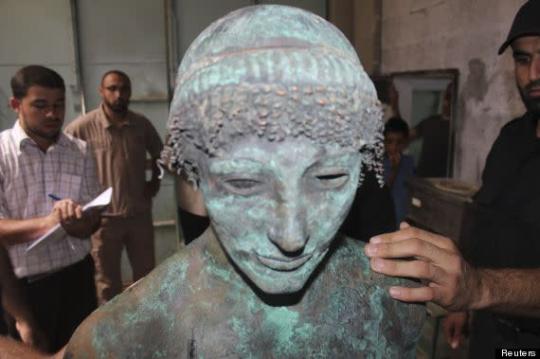
Lost for centuries, a rare bronze statue of the Greek god Apollo has mysteriously resurfaced in the Gaza Strip, only to be seized by police and vanish almost immediately from view.
Word of the remarkable find has caught the imagination of the world of archaeology, but the police cannot say when the life-sized bronze might re-emerge or where it might be put on display.
A local fisherman says he scooped the 500kg (1,100lb) god from the seabed last August, and carried it home on a donkey cart, unaware of the significance of his catch.
Others soon guessed at its importance, and the statue briefly appeared on eBay with a $500,000 (£300,000) price tag - well below its true value. Police from the Islamist group Hamas, which rules the isolated Palestinian territory, swiftly seized it and say they are investigating the affair.
Archaeologists have not been able to get their hands on the Apollo - to their great frustration- and instead must pore over a few blurred photographs of the intact deity, who is laid out incongruously on a blanket emblazoned with Smurfs.
From what they can tell, it was cast sometime between the 5th and the 1st century BC, making it at least 2,000 years old.
"It's unique. In some ways I would say it is priceless. It's like people asking what is the [value] of the painting La Gioconda [the Mona Lisa] in the Louvre museum," said Jean-Michel de Tarragon, a historian with the French Biblical and Archaeological School of Jerusalem.
"It's very, very rare to find a statue which is not in marble or in stone, but in metal," he told Reuters television.
The apparently pristine condition of the god suggested it was uncovered on land and not in the sea, he said, speculating that the true location of where it was unearthed was not revealed to avoid arguments over ownership.
"This wasn't found on the seashore or in the sea ... it is very clean. No, it was [found] inland and dry," he said, adding that there were no signs of metal disfigurement or barnacles that one normally sees on items plucked from water.
Palestinian fisherman Joudat Ghrab tells a different tale. The 26-year-old father of two said he saw a human-like shape,lying in shallow waters some 100 metres offshore, just north of the Egyptian-Gaza border.
At first he thought it was a badly burnt body, but when he dived down to take a closer look he realised it was a statue. He says it took him and his relatives four hours to drag the treasure ashore.
"I felt it was something gifted to me by God," Ghrab told Reuters. "My financial situation is very difficult and I am waiting for my reward."
His mother was less happy when she saw the naked Apollo carried into the house, demanding that his private parts be covered. "My mother said: 'What a disaster you have brought with you' as she looked at the huge statue," said Ghrab.
The discoloured green-brown figure shows the youthful, athletic god standing upright on two, muscular legs; he has one arm outstretched, with the palm of his hand held up.
He has compact, curly hair, and gazes out seriously at the world, one of his eyes apparently inlaid with a blue stone iris, the other just a vacant black slit.
Ghrab says he cut off one of the fingers to take to a metals expert, thinking it might have been made of gold. Unbeknownst to him, one of his brothers severed another finger for his own checks. This was melted down by a jeweller.
Family members belonging[ I doubt if his family ever had ties to Hamas,either directly either indirectly ] to a Hamas militia soon took charge of the statue, and at some stage the Apollo appeared on eBay, with the seller telling the buyer to come and collect the item from Gaza.
That would have been easier said than done, however, as Gaza is virtually sealed off from the outside world, with both Israel and Egypt imposing rigid controls on access to the impoverished enclave and its 1.8 million inhabitants.
Whether any potential buyers stepped forward is not clear, but when Hamas's civilian authorities found out about the artefact, they ordered the police to seize it.
Officials at Gaza's tourism ministry told Reuters the statue would not be shown to the public until a criminal investigation into who tried to sell it was completed.
However, Ahmed al-Bursh, the ministry's director of archaeology, said he had seen it and promised that Ghrab would receive a reward once the issue had been resolved.
"It is a precious treasure, an important archaeological discovery," said Bursh. Once the statue has been released by police, his ministry plans to repair it and put it on show in Gaza.
"International institutions have also contacted us and have offered to help with the repair process," he said, adding that a museum in Geneva and the Louvre in Paris wanted to take it on loan.
Like Ghrab, Bursh said the statue had been found at sea. The historian Tarragon said it was vital to know the true location of its discovery.
Some 5,000 years of history lie beneath the sands of the Gaza Strip, which was ruled at various times by ancient Egyptians, Philistines, Romans, Byzantines and crusaders.
Alexander the Great besieged the city and the Roman emperor Hadrian visited. However, local archaeologists have little experience to carry out any scientific digs and many sites remain buried.
Statues such as the Apollo cast would not have been held in isolation, meaning it may prove the tip of an historical iceberg, according to Tarragon.
"A statue at that time was [put] in a complex, in a temple or a palace. If it was in a temple, you should have all the other artefacts of the cult [at the site]," he said, adding that he hoped Hamas appreciated its potential importance.
"There is a feeling that they could find more and more [items] linked to the statue, more and more artefacts, so this is very sensitive," he said.
Source: https://www.reuters.com/article/us-palestinian-apollo-gaza-idUSBREA190NQ20140210/
https://www.aljazeera.com/features/2014/4/8/what-happened-to-gazas-apollo-statue
B) An 11-Year-Old Palestinian Boy Pursues His Dream of Becoming a Chef:
In the midst of adversity, stories of hope and aspiration emerge, exemplified by the journey of an 11-year-old Palestinian boy who dreams of becoming a chef. Despite the challenges he faces, including limited resources and economic hardship, his passion for cooking fuels his ambition.
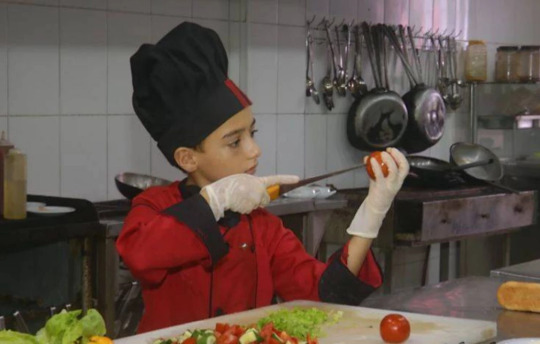
His story underscores the resilience and determination of the Palestinian people to pursue their dreams and overcome obstacles in pursuit of a brighter future.
Palestinian child Mahmoud Abu Nada cooks inside the kitchen of a local restaurant, in Gaza City on Oct. 13, 2018. Although blood cancer has forced him to leave school, 11-year-old Palestinian boy Mahmoud Abu Nada became a chef after receiving courses at a Gaza restaurant. TO GO WITH Feature: Gaza child suffering from cancer amazes people with cooking talent.
Source: http://www.xinhuanet.com/english/2018-10/16/c_137536471.htm
C) Palestinian-Japanese Cooperation For the restoration the mosaics of Hisham's Palace:
Hisham's Palace (Arabic: قصر هشام Qaṣr Hishām), also known as Khirbat al-Mafjar (Arabic: خربة المفجر), is an Vital early Islamic archaeological site in the Palestinian city of Jericho, in the West Bank. Built by the Umayyad dynasty in the first half of the 8th century, it is one of the so-called Umayyad desert castles. It is located 3 km north of Jericho's city center.In 2015, an agreement was signed between the Palestinian Ministry of Tourism and Antiquities and the Japan International Cooperation Agency to enable the 825 square metres (8,880 sq ft) mosaic in the palace, one of the largest in the world, to be uncovered and readied for display.
On 2018 the collaboration between Palestinians and Japanese archaeologists has yielded remarkable results, including the recent display of the site.
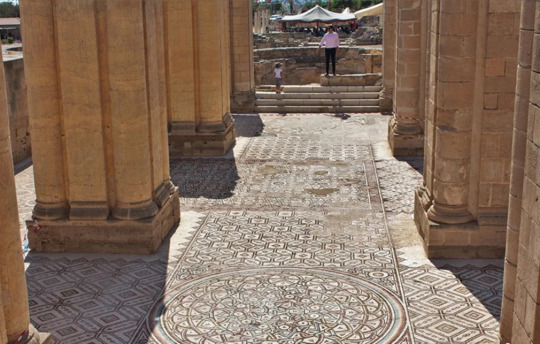

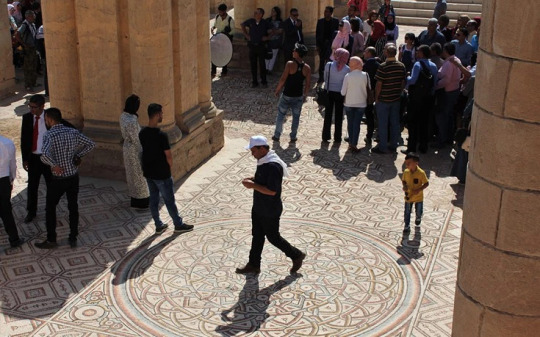
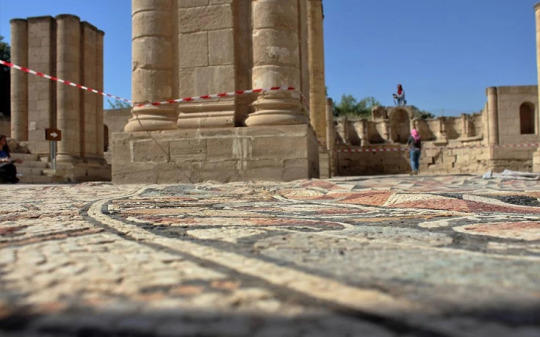
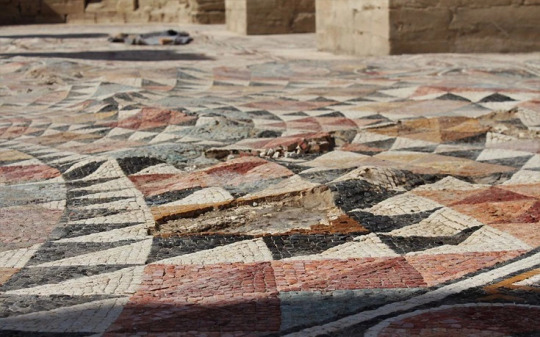
This joint effort not only highlights the importance of international cooperation in preserving cultural heritage,but also deepens the cultural ties between Palestine and Japan.
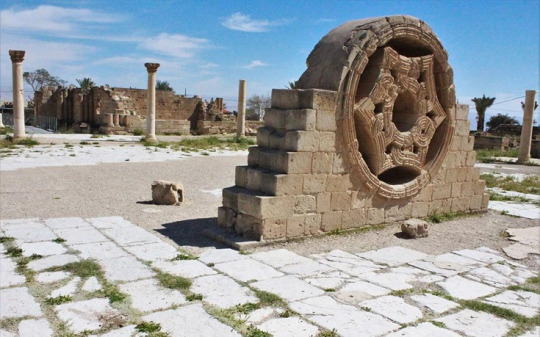
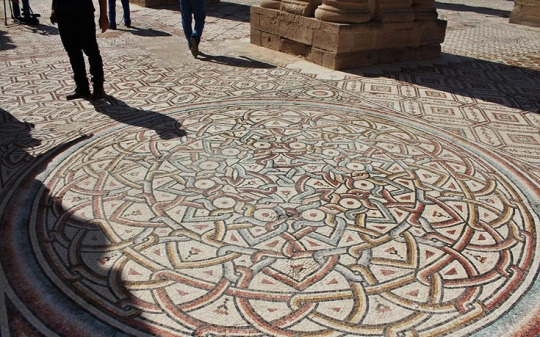
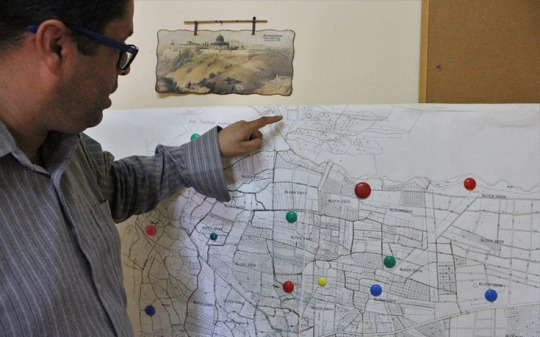
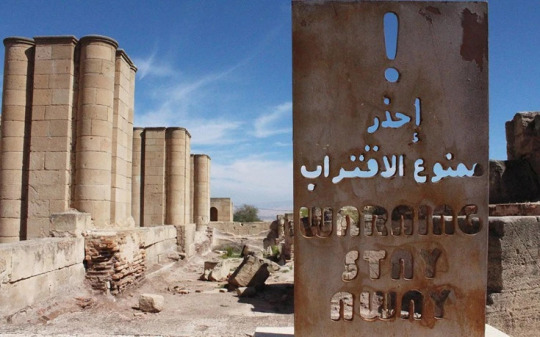

Through shared endeavors in archaeology and cultural preservation, Palestinians and Japanese forge bonds of friendship and mutual respect, enriching both societies in the process.

https://pcpsr.org/ar/node/893
D) The Representation of Palestinian Girls in the Anime "Canaan":
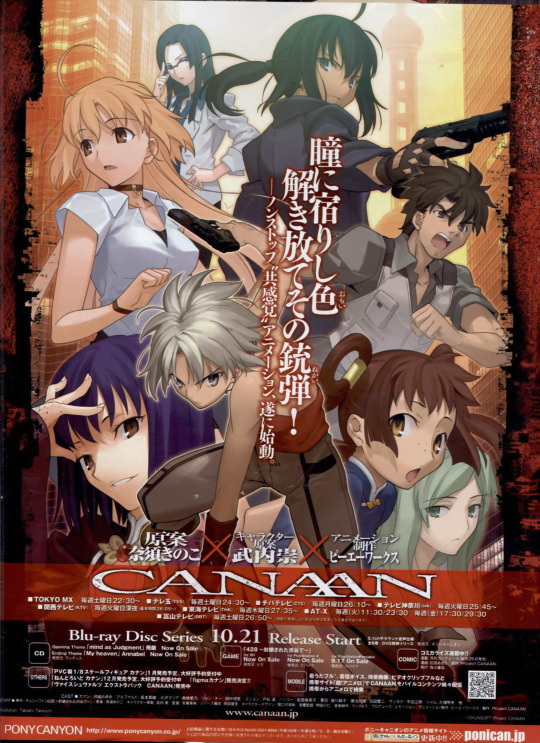
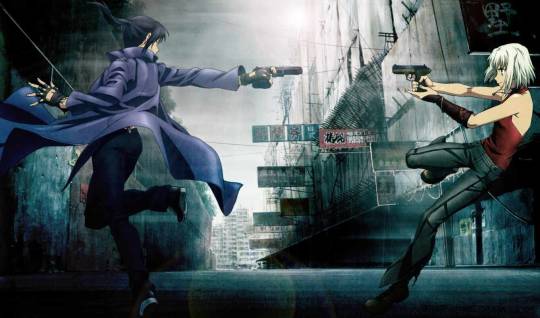
In the world of entertainment, the original anime "Canaan" offers a unique portrayal of Palestinian girls, Alphard and Canaan, whose contrasting backgrounds and beliefs shape their identities and actions.
Plot:
A Palestinian teenaged girl and a mercenary, Canaan is dispatched by her unknown superiors to the city of ShanghaiWP in the People's Republic of ChinaWP where she meets up with Maria Ōsawa. Now a photographer, Maria reunites with her friend Canaan after being saved from harassment, during a trip to the Middle East years ago. Their presence in Shanghai, however, has been greatly overshadowed by the upcoming,crucial NBCR International Anti-Terrorist Conference in the same city where Alphard(Canaan's hateful rival) plans to stage a terrorist attack with her subordinates known as "Snakes".
💕The Palestinian girl Canaan is amazingly pretty(kawai).💕 Her eyes are now radiant red because of her synesthesia:An ability as a radar to locate others, to hack into mechanical systems, and to dodge/deflect bullets easily.
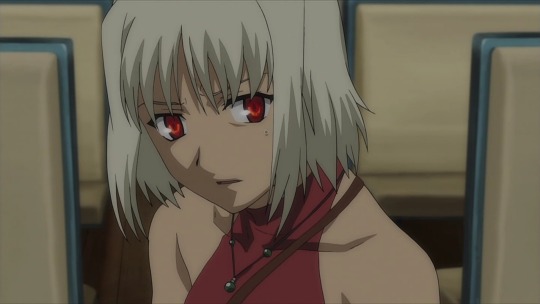
Through their characters, the anime explores themes of conflict, identity, and resilience, offering viewers a nuanced perspective on the Palestinian experience. While fictional, the depiction of Palestinian characters in "Canaan" reflects the diversity and complexity of Palestinian society, challenging stereotypes and fostering understanding.
#Palestine#Bronze Statue of Apollo#Ancient Greek Artifact#Culture#Palestine Gaza#Khirbat al-Mafjar#安藤正浩#Type-Moon#Hisham's Palace#Jericho Palestine#Masahiro Andō#Mari Okada#岡田 麿里#Canaan anime#カナン#P.A. Works#株式会社ピーエーワークス#I Love Japan#日本が大好きです#I love Palestine#私はパレスチナが大好きです#ancient Greece#古代ギリシャ#Palestinian child Mahmoud Abu Nada#cute manga girl#かわいい女の子#Kawaī#archaeology
2 notes
·
View notes
Text
Masterlist of Vetted Fundraisers from the Palestinians who directly contacted me (27 December - 6 January)
6 January
Mohammad Al-Helo (organizer: Mohamed Khalqullah) (@helough): Mohammad and his wife Samah have 4 children: Jana (10), Maryam (8), Aisha (4), and Diaa (born in this genocide). Mohammed’s brother was killed by snipers. (https://gofund.me/9ce8b36e) (#391 on @/gazavetters vetted list)
Marwa Nasla (@marwanasla, @marwajewan): Marwa has 3 children: Belasan, Joan and Nada, ages 7 to 14. Her mother-in-law has lost her husband and is suffering from lung infections and chronic diseases. (https://gofund.me/38cc279d) (vetted by @/bilal-salah0) (£820 raised of £20K target)
Anas Alsanea, Dana Abuyousef, Ghaith (@danaanasblog, dana2333): Dana is 26 years old and she is a lawyer. Dana and Anas’s son Ghaith is only 2 years old. Their house has been bombed and they are now displaced in Nuseirat. (https://gofund.me/85897c23) (vetted by @/90-ghost)
Resam Ashour (@resam1919, @resam179): Resam has 5 children: Nidal, Jihad, Noor, Huda, and Badr. Her elderly mother suffers from diabetes, high blood pressure, and has undergone open-heart surgery. Noor has 2 daughters: Jana and Luna. Resam’s husband has been killed. (https://gofund.me/0d8e6e23) (shared by @/90-ghost) (£163 raised of £15K target)
5 January
Ahmed Ayman Naser (@ahmednaserrsblog): Ahmed is 26 years old and from a family of 9. They have lost 70 family members to the genocide. Ahmed’s father was injured and had to have his foot amputated. His little sister has asthma and needs medicine. His mother is suffering from cancer and needs treatment abroad. (https://gofund.me/d5bc1bcc) (#427 on @/gazavetters vetted list, vetted by @/bilal-salah0)
Hanan Sobheh (@hanan-family11): Hanan is 31 years old. She has 4 children: Ziyad (7), Joan (5), Eileen (3) and Manal, who she just gave birth to through c-section. (https://gofund.me/6c6b1e28) (#362 on @/gazavetters vetted list) ($185 CAD raised of $2K goal)
3 January
Ahmed Al-Astal (@ahmedsammer12): Ahemd's son Samir is only a teenager but may lose his foot due to his severe injuries! Ahmed has lost his younger son as they were displaced and has been unable to find him. People told him his son may have been targeted and killed. Please help them buy food and medication! (https://gofund.me/f7c9ae3f) (#428 on @/gazavetters vetted list) ($105 USD raised of $50K target)
2 January
Ahmed (Organizer: Abi Lass) (@almostcoraltriumph, @ahmed-gaza033, @ahmed-gazaa98, @ahmad-gaza012): Ahmed is 26 years old and from a family of 7. They have been displaced and their house has been destroyed. (https://gofund.me/e41bdf4f) (#329 on @/gazavetters vetted list)
Nazmy Aboouda (@nazmy1988): Nazmy and his family have been displaced. They do not have a shelter. His mother suffers from chronic diseases and is in need of surgery. He has young children. (https://gofund.me/3d7d7a06) (#380 on @/gazavetters vetted list) (€90 raised of €10K target)
1 January
Mahmoud Eltamas (@talmas-family): Mahmoud and his wife have 3 children. They have been displaced and are now living in a tent. (https://www.paypal.com/donate?campaign_id=MM8ZPK4HNFADS) (shared by @/90-ghost) (€32 raised of €10,000)
Yhia Abuassi/ Yahya Abu Assi (@assifamilygaza3, @assifamilygaza1, @assifamilygaza): Yahya has 3 children: Moin (3), Fatima (1) and baby Hamza. His wife Nour has just given birth to baby Hamza in December 2024. Nour also needs medical care after enduring a c-section. They are from northern Gaza but are now displaced in a tent in southern Gaza. (https://gogetfunding.com/donate-to-save-my-family/) (#306 on @/gazavetters vetted list) (US$140)
31 December
Basma Al-Ghoul (@basmafamily): Basma has 3 children, and she is currently pregnant with her 4th child who is expected to be born soon. she is suffering from infection in her kidney and bladder, and hse is afraid it will be transmitted to the baby when giving birth. (https://gofund.me/7240dc30) (#392 on @/gazavetters vetted list)
Najwa Khaled (@najwakhaled99): Najwa has 3 children: Yazan, Fadi and Ahmed. Her husband lost 11 members of his family. Their house has been bombed and the tent they are in has been flooded. (https://gofund.me/736af801) (#352 on @/gazavetters vetted list)
30 December
Ayah (@ayo0osh): Ayah is a mother of 3 children ages between 5 and 10. They have been displaced and the children are suffering from health issues due to the lack of nutritious food. (https://gofund.me/320b59c8) (#166 on vetted fundraiser list by @/el-shab-hussein and @/nabulsi, shared and promoted by @/nabulsi, vetted by @/90-ghost) (€460 raised of €50K target)
Miral Abujarad (@abujaradfamilyfromgaz): The Abujarad family consists of 7 people. Miral (the mother) is suffering from a sinus disease. There are 4 children: Malak, Mohammed, Sanad and Haya. They are now displaced in Deir Al-Balah. (https://gofund.me/1d03c9d5) (Line #130, Case Number U66E7 on Project Watermelon vetted list, Promoted by Pali Pals on IG and #239 on the Pali Pals vetted list)
27-29 December
Ahmad Dahalan (@ahmedmohammeds-blog): Ahmed studied journalism and media. He and his family have been displaced. He has lost friends, his closest uncle, and several of his neighbours. (https://gofund.me/54139ea0) (Vetted by association. Ahmed is a close relative of @/jomana-ha (vetted by association via @/asmaayyad)) (€128 raised of €30K goal)
Aziz, Heba, Jumana Elmadhoun (@azizzaqout1, @azizzaqout): Heba is pregnant and has 5 children: Aziz (16), Zeina (15), Gazem (12), Abdel Rahman (9) and Yahia (1). She went to Ramallah for treatment and has been separated from her children, including 1-year-old Yahia ever since. (https://gofund.me/8fa3997e) (vetted by association. They are the son-in-law of @/emanzaqoutt (shared by 90-ghost))
Wafa (@wafafamily1, @wafafamilygaza): Wafa’s family consists of 8 people. She has lost her father to cancer due to a lack of medical treatment. She now lives with her mother, and her 5 siblings: Nadeen, Walaa, Liqaa, Mohamed and Ali. (https://gofund.me/7d87c7ef) (vetted by @/90-ghost. also vetted by association. Wafa is a friend of Osama Basil (Shared by 90-ghost, #146 on @/gazavetters vetted list. Vetted by association)) (€696 raised of €10K target)
Also check out my freshwater pearl necklace raffle for Gaza fundraisers with low donations!!
Click here for my Google Doc with my complete masterlist of all the Palestinian gfm asks I've received
Info on how gfm campaigns vetted: See here, here, here and here.
See post here for other verified ways to send aid to Gaza.
Mutual Aid Funds: The Sameer Project: North and Central Gaza aid/ Refaat Alareer Camp Aid/ South Gaza Aid
Daily Clicks on Arab.org. Every click made is registered in their system and generates donation from sponsors/advertisers.
See links below for my Masterlists of Vetted Fundraisers from the Palestinians who sent me asks for if you want to help more people! As well as resources for palestinian students if you are a palestinian student!
Masterlists of Vetted Fundraisers
Click here for my Masterlist for fundraisers from 13 - 25 July.
Click here for my Masterlist for fundraisers from 26 -29 July.
Click here for my Masterlist for fundraisers from 30 July - 1 August.
Click here for my Masterlist for fundraisers from 2 - 5 August.
Click here for my Masterlist for fundraisers from 6 - 10 August.
Click here for my Masterlist for fundraisers from 11 - 14 August.
Click here for my Masterlist for fundraisers from 15 - 18 August
Click here for my Masterlist for fundrasiers from 19 - 21 August
Click here for my Masterlist for fundrasiers from 22 - 24 August
Click here for my Masterlist for fundraisers from 25 - 28 August
Click here for my Masterlist for fundraisers from 29 August - 1 September
Click here for my Masterlist for fundraisers from 2 - 5 September.
Click here for my Masterlist for fundraisers from 6-10 September.
Click here for my Masterlist for fundraisers from 11-14 September.
Click here for my Masterlist for fundraisers from 15-18 September.
Click here for my Masterlist for fundraisers from 19-22 September.
Click here for my Masterlist for fundraisers from 23-26 September.
Click here for my Masterlist for fundraisers from 27-30 September.
Click here for my Masterlist for fundraisers from 1-4 October.
Click here for my Masterlist for fundraisers from 5-9 October.
Click here for my Masterlist for fundraisers from 10-14 October.
Click here for my Masterlist for fundraisers from 15-21 October.
Click here for my Masterlist for fundraisers from 22-26 October.
Click here for my Masterlist for fundraisers from 27 October - 2 November.
Click here for my Masterlist for fundraisers from 3-12 November.
Click here for my Masterlist for fundraisers from 13-22 November.
Click here for my Masterlist for fundraisers from 23-28 November.
Click here for my Masterlist for fundraisers from 29 November - 5 December.
Click here for my Masterlist for fundraisers from 6-11 December.
Click here for my Masterlist for fundraisers from 12-17 December.
Click here for my Masterlist for fundraisers from 18-26 December.
Resources for Palestinian Students!
Initiatives and resources to support Palestinian students, academics and universities:
This is a list of initiatives and resources for Gazan students seeking to complete their studies, including initiatives, resources, training and scholarships. See list here.
Scholarships for Displaced Palestinian students:
Putting this here for the palestinians who follow me: If you are a displaced Palestinian student looking to fund your education, this document lists the scholarships available around the world for displaced Palestinian students.
#queued#queued post#palestine#gaza#free gaza#free palestine#post has been vetted and verified#verified#gaza genocide#vetted#donations#fundraising#vetted gfm#vetted campaign#vetted fundraisers#vetted gofundme#verified fundraiser#verified gofundme#gaza fundraiser#gaza gofundme#palestine gofundme#palestine fundraiser#gaza gfm#palestine gfm#masterlist#26 december - 7 january
13 notes
·
View notes
Text
Boycott!

Now that I have your attention:
So close...

#us politics#palestine#cartoon#cartoonist#israel#palestina#gravity falls#free palestine#free gaza#gaza#israel is a terrorist state#save the children#save family#gofoundme#lana del rey#billford#the book of bill#fall#autumn#halloween#spooky season#hatsune miku#vocaloid#utauloid#synthesizer v#pichaloid#akita neru#kasane teto#gaza strip#taylor swift
10 notes
·
View notes
Text
Ministry of Health:
—
The toll of martyrs in the West Bank today, Thursday, reached 18, including a 15-year-old child.
The names and ages of today's Thursday martyrs in the West Bank governorates:
Martyrs of Jenin
Ayham Mohammed Ibrahim Amer (23 years old)
Mohammed Nasser Hassan Matahen (30 years old)
Raafat Aql Omar Abu Aql (21 years old)
Mahmoud Hussein Ali Abu Al-Nada (47 years old)
Qais Raed Jamal Dwaikat (21 years old)
Lotfi Sayel Howaiti (21 years old)
Mohammed Abdul Karim Al-Sabbagh (30 years old)
Mohammed Youssef Azzam Zayed (15 years old)
Mu'tasim Fawaz Issa (32 years old)
Ahmed Mahmoud Shafiq Khalaf (18 years old)
Mohammed Tareq Hussein Fayyad (19 years old)
Ibrahim Hassan Zaher Abahreh (25 years old)
Ahmed Taysir Mahmoud Abu Qotnah (22 years old)
Thaer Mohammed Marai Abu Qotnah (23 years old)
Martyr of Al-Amari Camp - Ramallah
Mohannad Abdul Qader Jad Al-Haq (29 years old)
Martyr of Nablus
Qadri Azmi Qadri Hattab (22 years old)
Martyr of Dura - Al-Khalil
Anas Nasser Mohammed Abu Atwan (30 years old)
Martyr of Beit Fajjar - Bethlehem
Mohammed Fareed Hamdan Thawabteh (51 years old)
Palestinian Ministry of Health in Gaza:
—
10,812 martyrs, including 4,412 children, 2,918 women, and 667 elderly, as well as 26,905 injured since the beginning of the aggression on Gaza.
6 notes
·
View notes